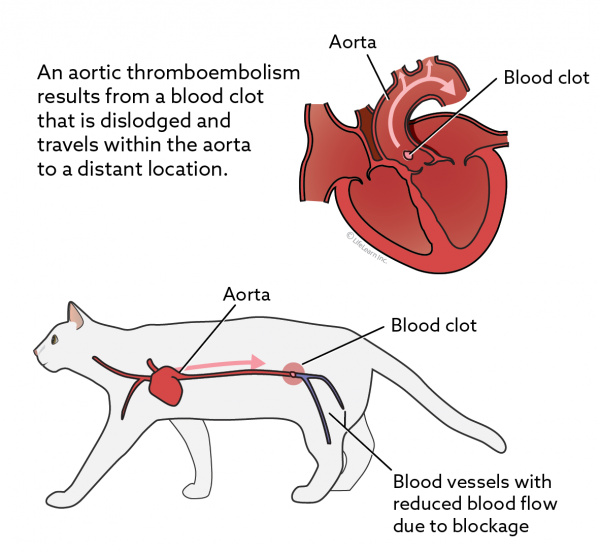saddle thrombus cat causes
Id never heard of it before and it happened very quickly. Is Hcm In Cats Hereditary.
/stethoscope-813823560-6ffd152f92f14f4b979456c98d2bd6a1.jpg)
How To Treat Saddle Thrombus In Cats
While aortic thromboembolism is a rare occurrence in dogs this disorder is much more common in cats.

. Heart disease can cause disturbances in blood flow through the heart that can lead to the formation of blood clots. A large enough clot forms a classic saddle thrombus although smaller fragments have been known make it farther downstream to the intestines kidney or brain. An embolism is when the clot lodges within a vessel.
Cat Breeds Most Likely to Be Affected by Excessive Blood Clots. 90 of saddle thrombus cases have underlying heart disease. In cats their heart walls tend to enlarge inward giving less space for the blood to move through the heart.
A big enough clot forms a classic saddle thrombus although smaller fragments have been known to travel to the brain kidney or intestine. This causes severely reduced blood flow to the tissues receiving blood from that particular part of the aorta leading to decreased oxygen in the tissues. What causes saddle thrombus in cats.
Methicillin-resistant Staphylococcus aureus in Dogs and Cats. Multiple Myeloma in Dogs and Cats. While aortic thromboembolism is a rare occurrence in dogs this disorder is much more common in cats.
She explains that Kitty has congestive heart failure along with serious heart disease and this latter issue is what precipitated the formation of the clot. Cat Breeds Susceptible to Blood Clots. A saddle thrombus is caused by a blood clot that came from the atrium of the heart.
Anyway Rustys story is we found him crying not able to move his hind legs. Symptoms appear suddenly and. The saddle thrombus comes from a larger clot in the left atrium of the heart.
It is thought that clots form in one chamber of the left side of the diseased heart. The cat is unable to put full weight on the affected leg when it is struck by a clot in the back leg. WHERE THE SADDLE THROMBUS CAME FROM.
My cat just died of Saddle Thrombus. Aortic thromboembolism also referred to as saddle thrombus is a common complication associated with all types of heart disease in the cat. The most common cause of ATE is a heart disease called Hypertrophic Cardiomyopathy.
When a saddle thrombus occurs there is a loss of blood flow to the hind legs causing pain. Saddle thrombus aortic thromboembolism in cats Overview. Hyperthyroidism and neoplasia may also cause aortic thromboembolism.
The most common cause of ATE is a heart disease called Hypertrophic Cardiomyopathy. Free shipping over 50 USA Canada 1-877-937-4372 the pet expert hotline. This condition is also sometimes called a saddle thrombus.
Feline aortic thromboembolism fate also known as saddle thrombus is a serious and sometimes fatal complication of heart disease in cats. Other less common causes. The majority of cases are due to an underlying heart condition usually hypertrophic cardiomyopathy which in many cases many cat owners and veterinarians are unaware of until aortic thromboembolism occurs.
In cats their heart walls tend to enlarge inward giving less space for the blood to move through the heart. Causes Saddle thrombosis is devastating as there is no warning. What cats are at risk for this.
In fact 89 of cats with a saddle thrombus have heart disease. This is because cats with heart disease often develop. The reason for this is that cats with heart disease often develop large clots inside their hearts that release small clots into the bloodstream.
Feline cardiogenic arterial thromboembolus ATE also known as saddle thrombus is a devastating complication of heart disease in cats. Cat breeds most likely to be affected by excessive blood clots Other causes of clot formation in the cat include certain cancers and hyperthyroidism especially lung cancer. Heart disease is the most common cause of ATE in cats.
72 of cats with a saddle thrombus have both rear legs affected. What causes saddle thrombus in cats. Saddle thrombus in cat causes.
Were your cats hind legs fully paralyzed or did he still move them a little. Hyperthyroidism and cancer are also less common causes. 2 Hypertrophic cardiomyopathy is the most common type of cardiac condition seen in cats and most often the reason for a saddle thrombus.
Other causes of clot formation in the cat include certain cancers and hyperthyroidism especially lung cancer. A clot of this type blocks blood flow to the affected area. A saddle thrombi is most common in cats with heart disease and it is most common in cats with heart disease.
Saddle thrombi are most common in cats with heart disease. A saddle thrombus is a blood clot that blocks blood supply to the back legs. What cats are at risk for this.
A thrombosis is the formation of a blood clot. Approximately 89 of cats with arterial thromboembolism have underlying heart disease. Muzzle Folliculitis and Furunculosis Chin Acne Muzzle Acne in Dogs.
A saddle thrombus or arterial thromboembolism ATE is the most common cause of rear limb paralysis in cats. This condition is also sometimes called a saddle thrombus. In most affected cats initial thrombus formation occurs as a consequence of left atrial enlargement caused by significant cardiac disease most commonly hypertrophic cardiomyopathy.
Mushroom Poisoning in Dogs and Cats. Other causes of clot formation in the cat include hyperthyroidism and certain cancers especially lung cancer. In cats these blood clots can travel downstream and become lodged in the femoral arteries -- the main arteries that provide blood flow to the hind limbs.
Saddle thrombi are most common in cats with heart disease. This is because cats with heart disease often develop large clots inside their heart that release small clots into the blood stream. However any form of cardiomyopathy or congenital defect eg mitral stenosis affecting the left heart may result in ATE.
This causes severely reduced blood flow to the tissues receiving blood from that particular part of the aorta leading to decreased oxygen in the tissues. Two separate retrospective studies have identified cardiac disease in more than 90 and in 69 of cats with thromboembolism12 Neoplasia and thyroid disease have also been associated with ATE. This obviously begs the question as to why there would be a large blood clot in a cats heart.

Saddle Thrombus Every Cat Owner S Worst Nightmare Petmd
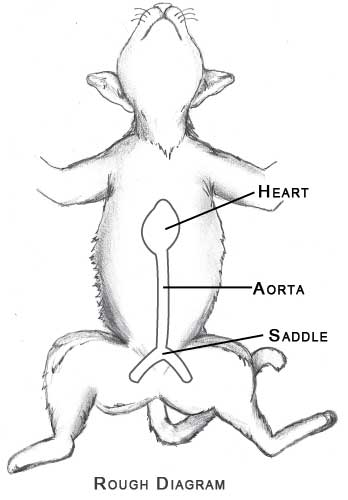
Saddle Thrombus Aortic Blood Clots In Cats
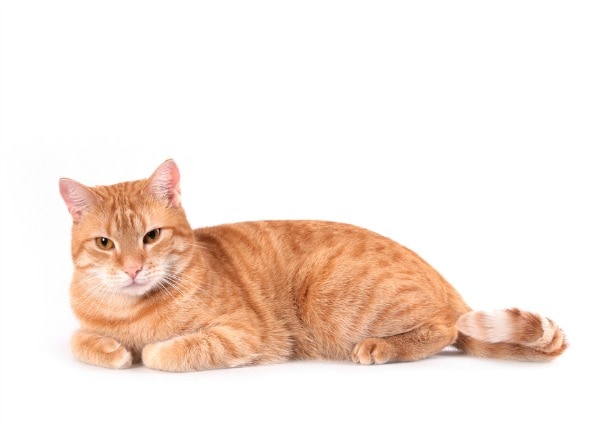
Saddle Thrombus Every Cat Owner S Worst Nightmare Petmd
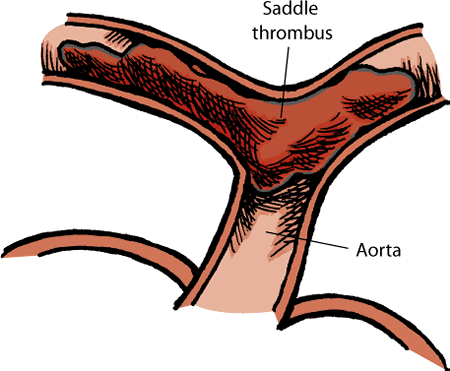
Blood Clots And Aneurysms In Cats Cat Owners Merck Veterinary Manual
Managing A Patient With Arterial Thromboembolism Veterinary Practice
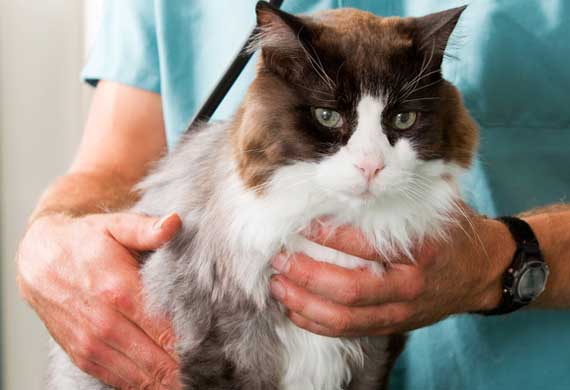
Saddle Thrombus Every Cat Owner S Worst Nightmare Petmd


